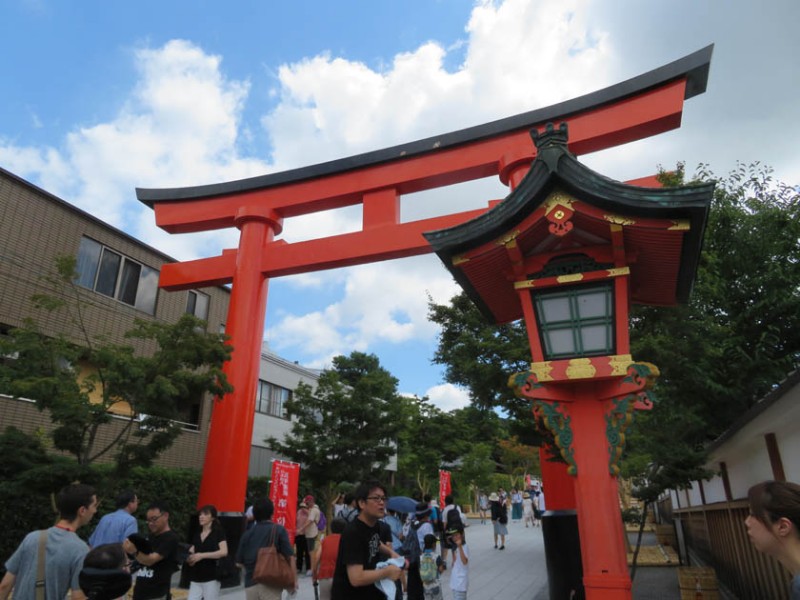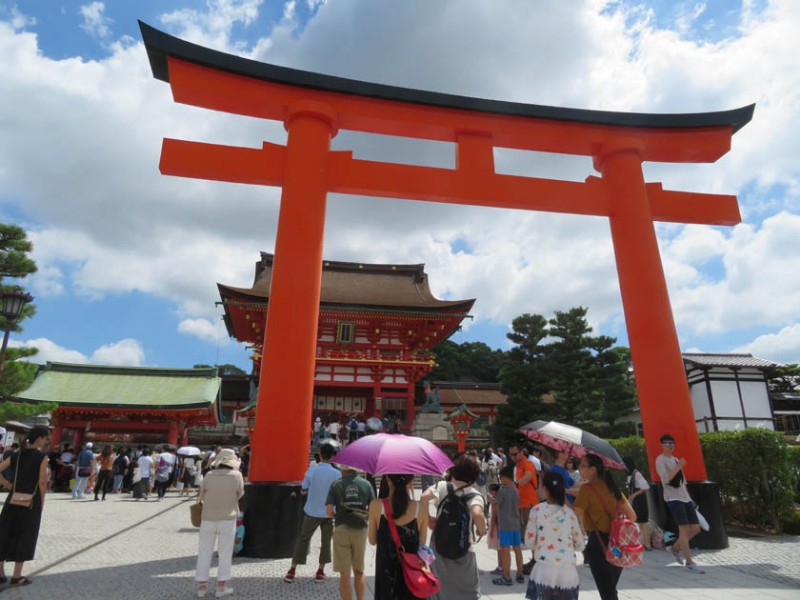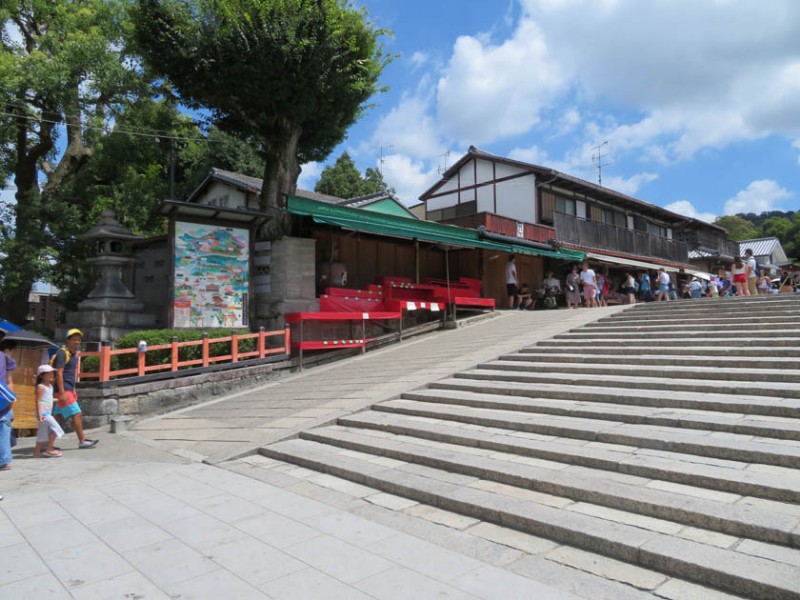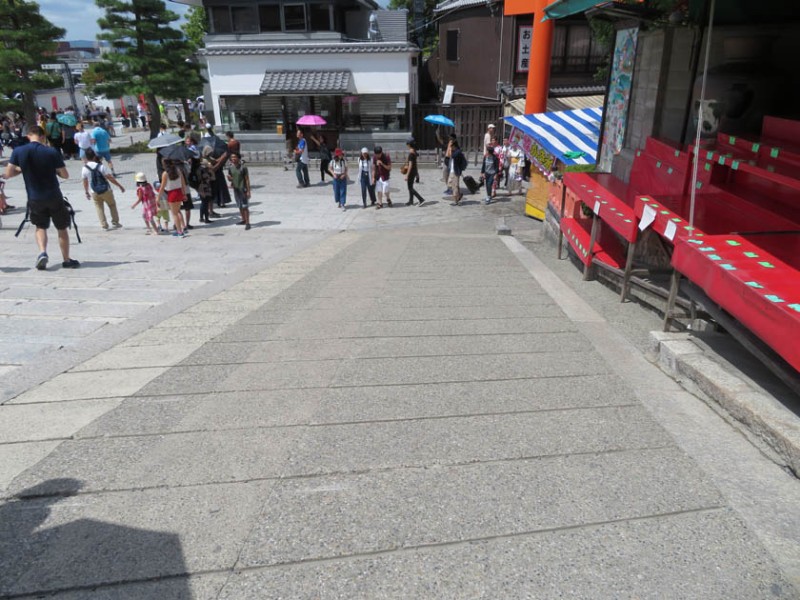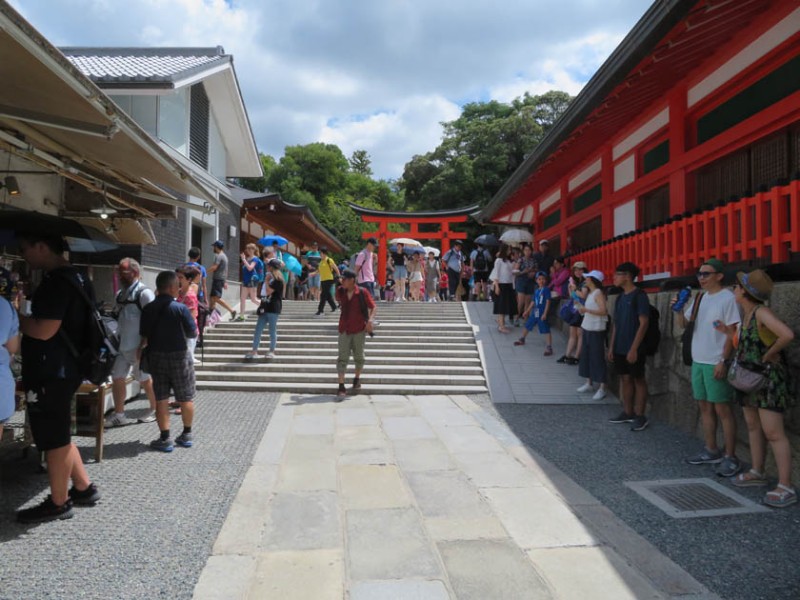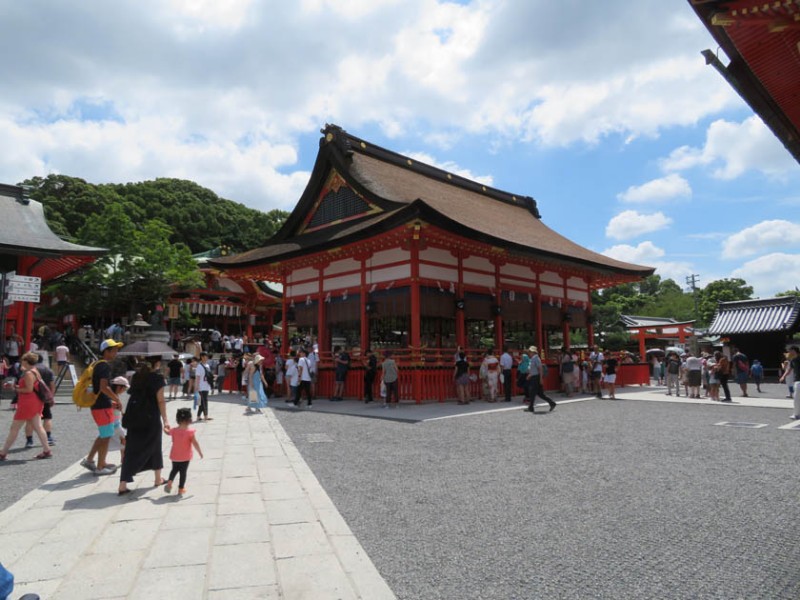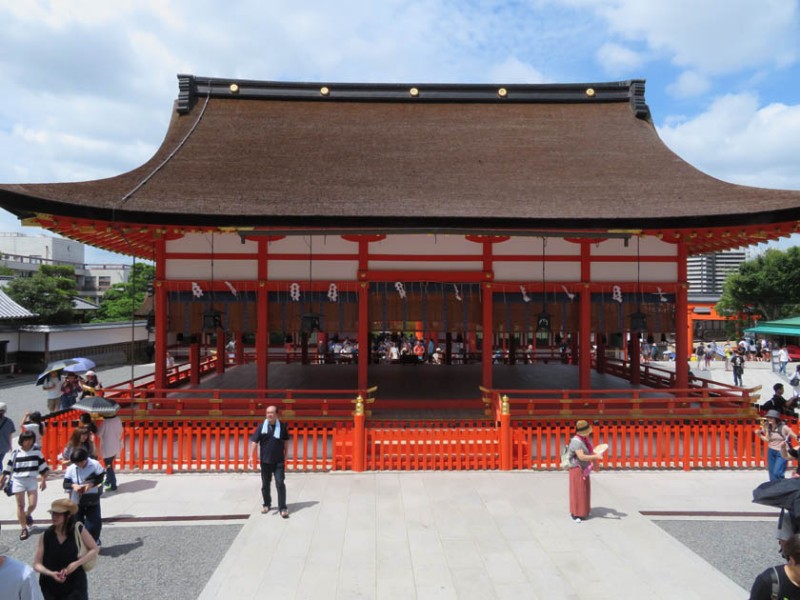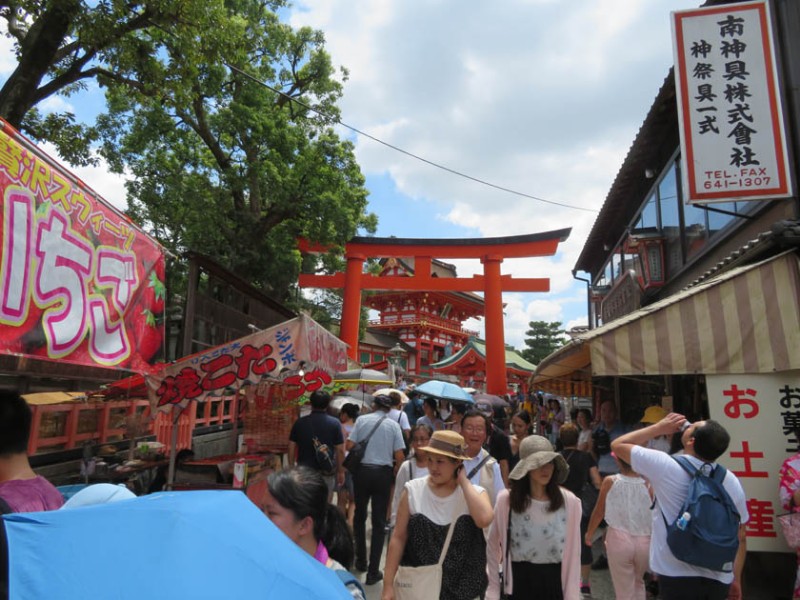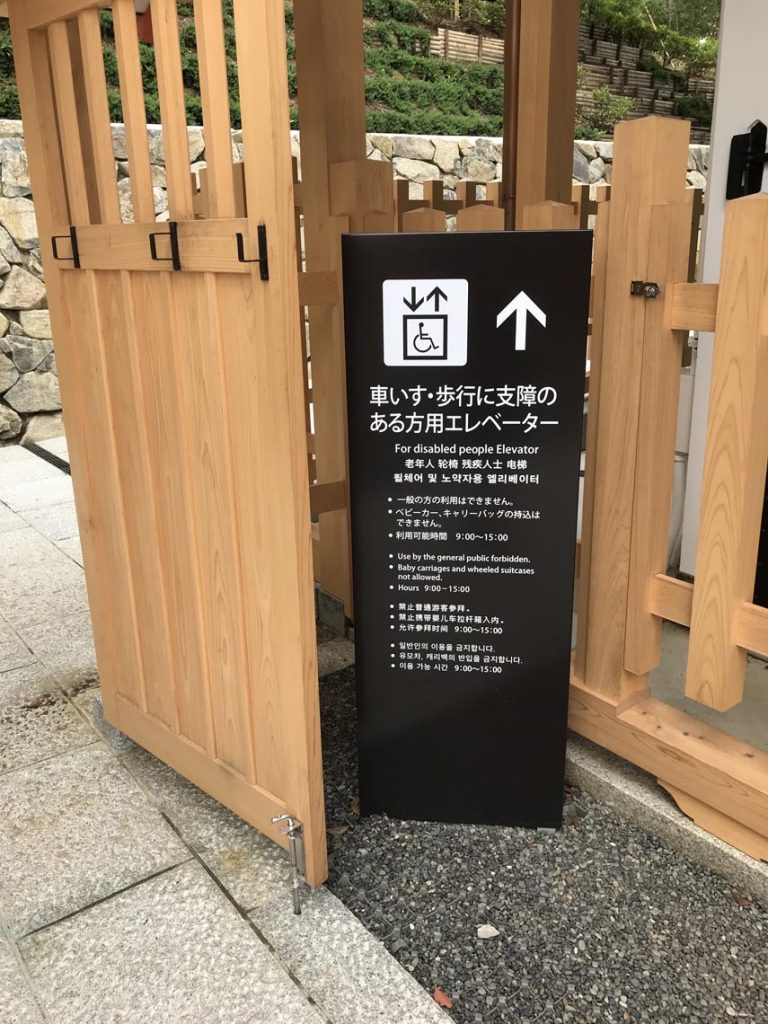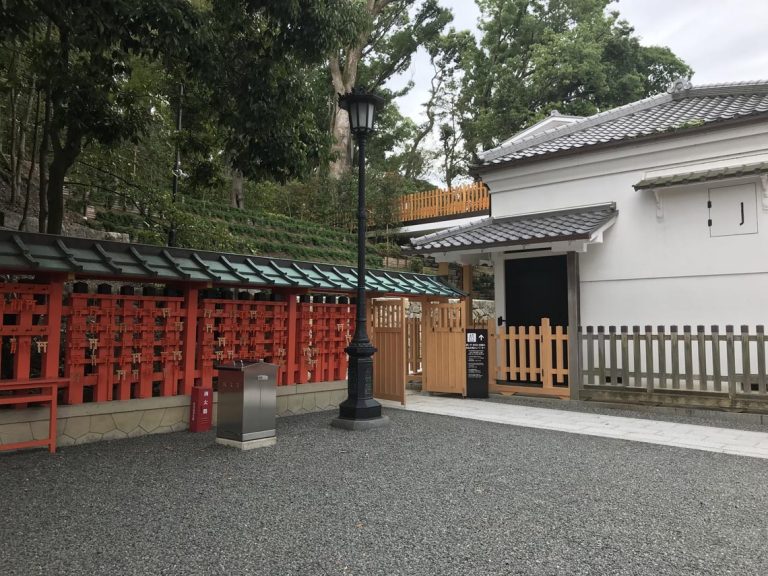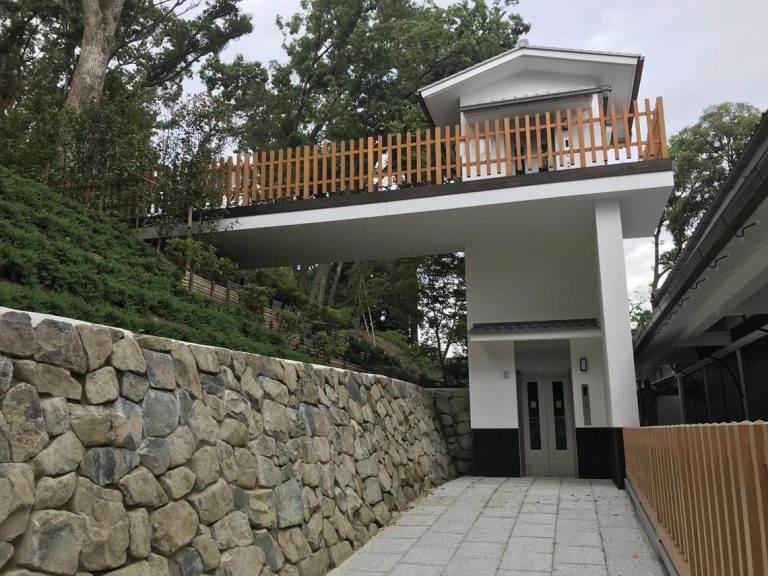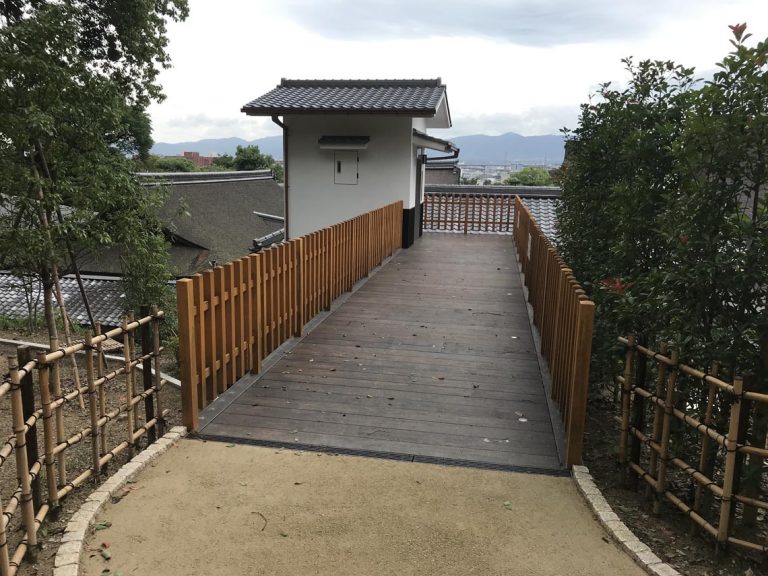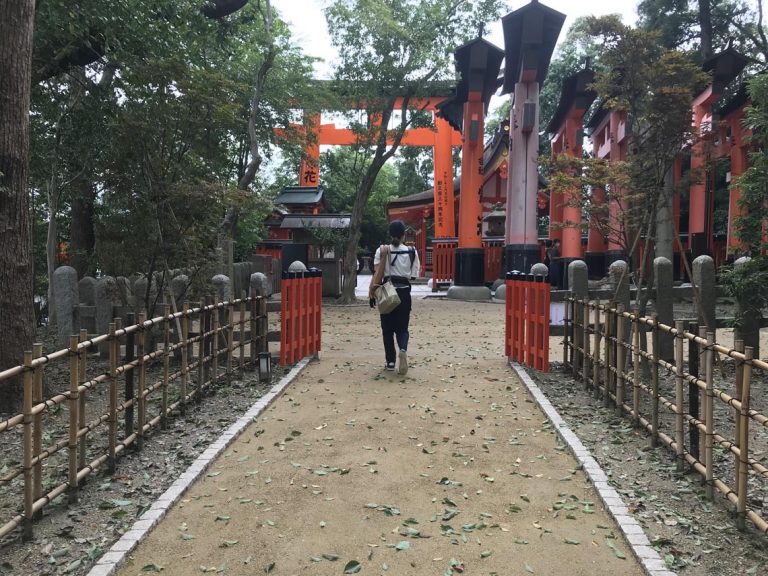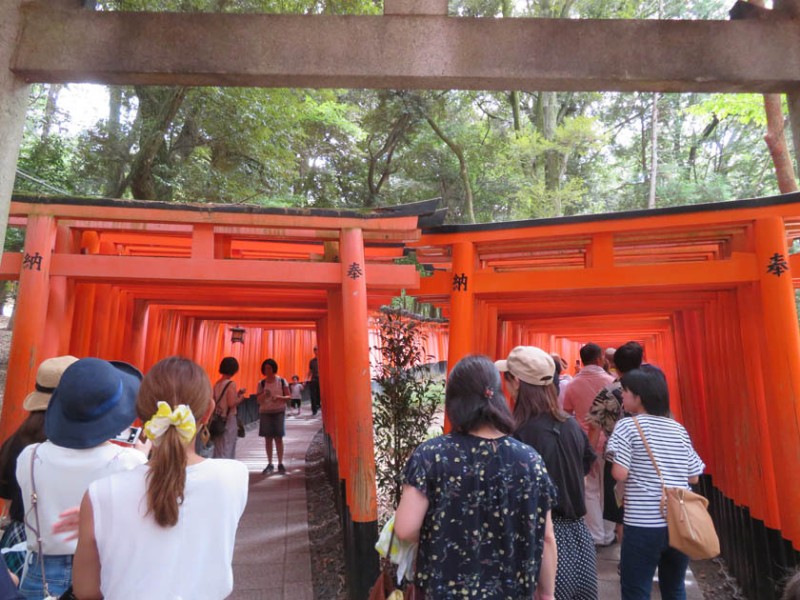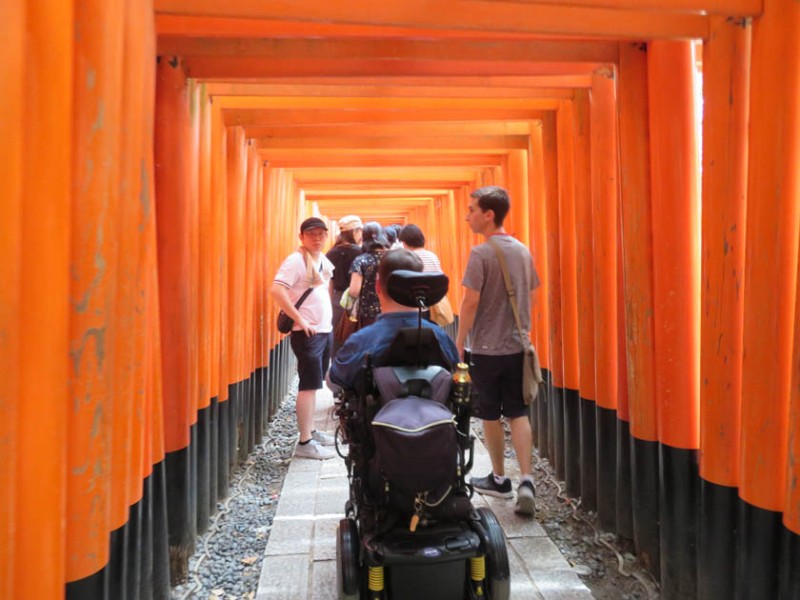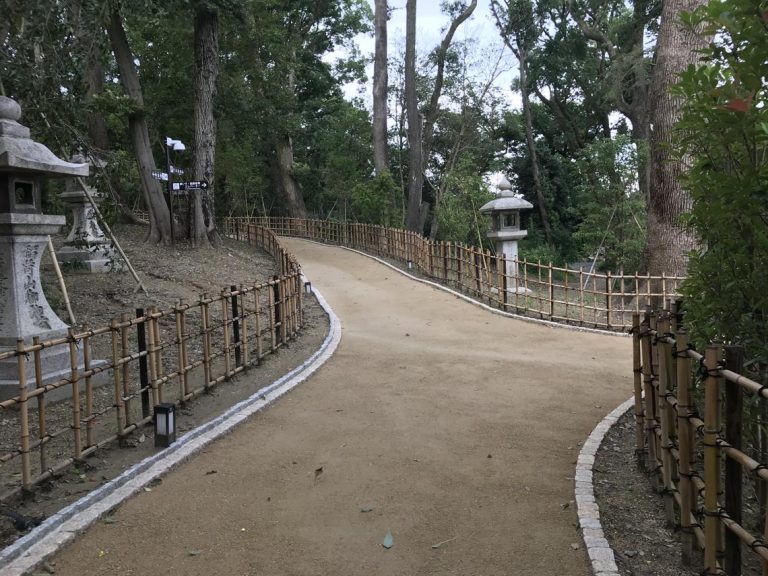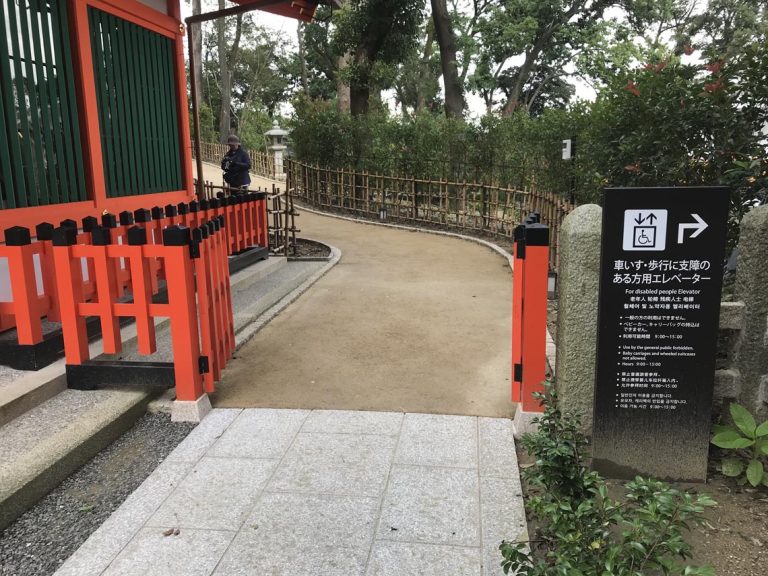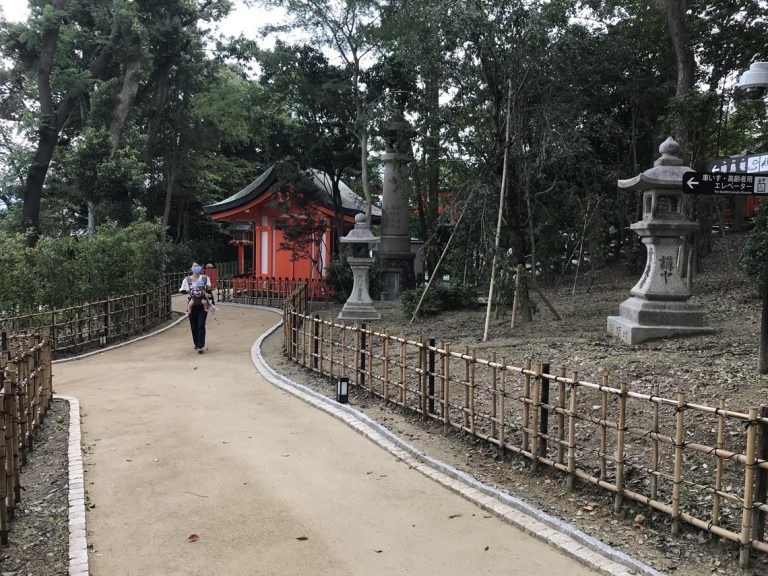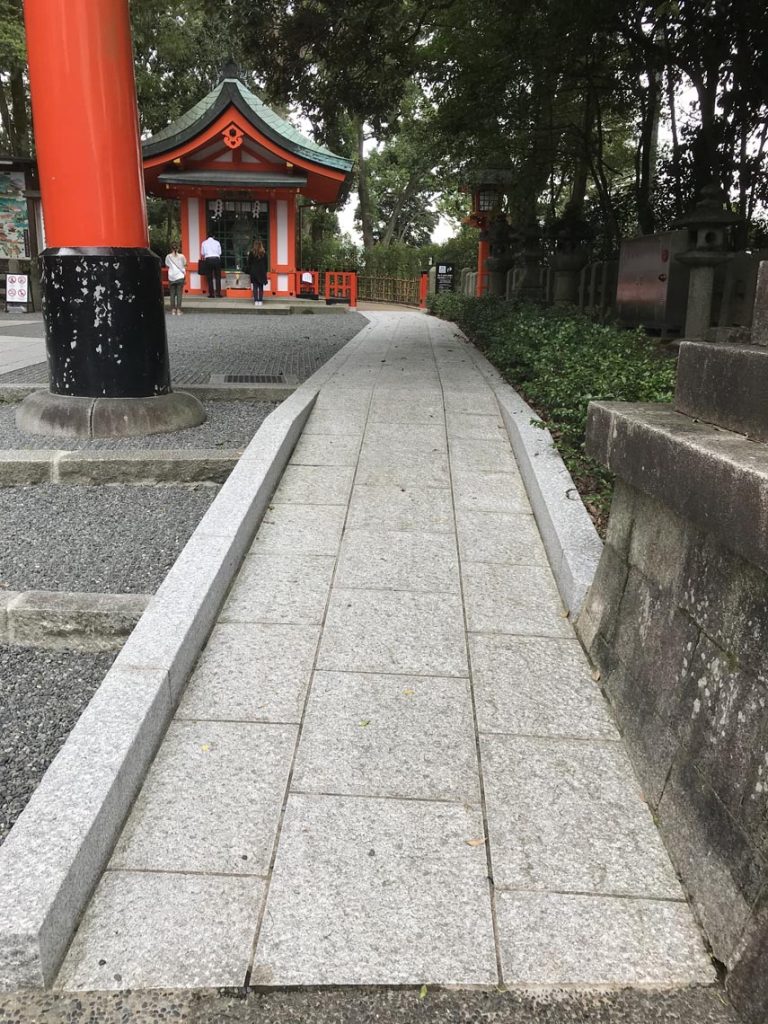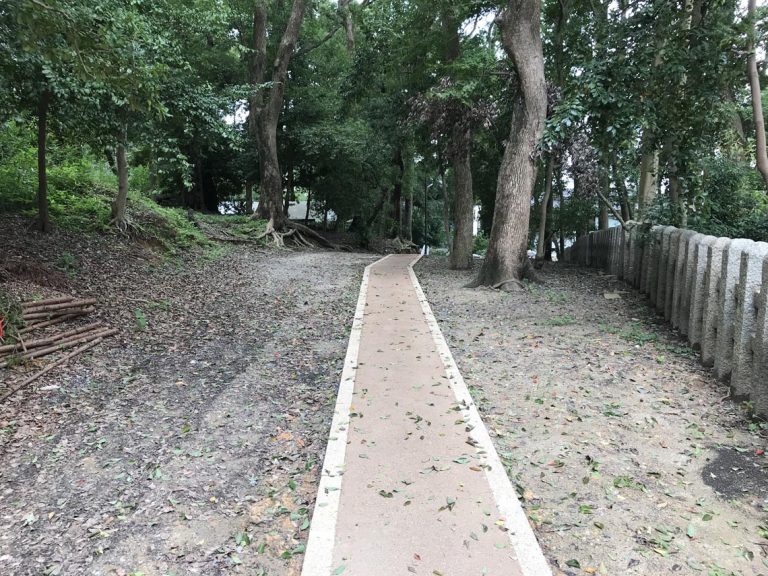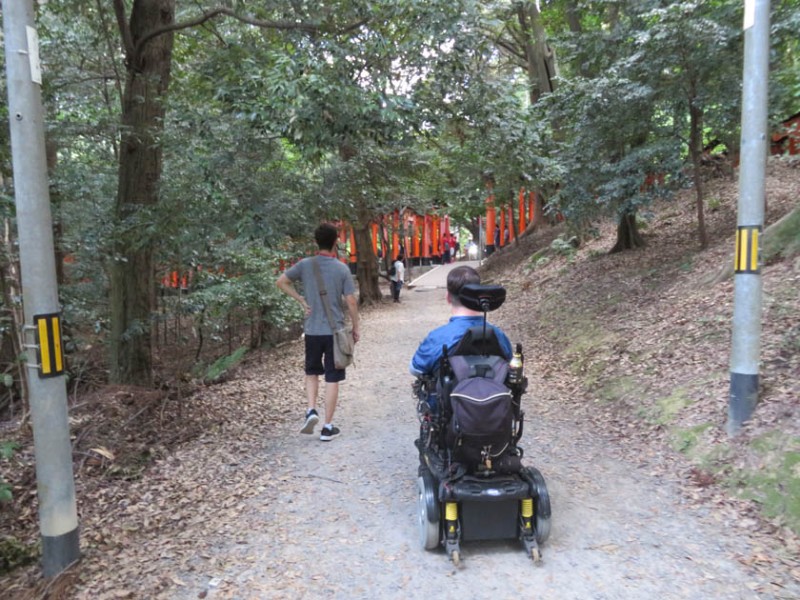Fushimi Inari Shrine is an iconic site in Kyoto with thousands of torii gates that wind up a forested mountain. With a bit of effort, visitors in wheelchairs can see the first stretch of the path and the first two shrines.
Background Information
Founded in the early 700s and covering an entire mountain, Fushimi Inari is one of Kyoto’s largest and oldest Shinto shrines. The buildings you can see there today are from later periods, but the shrine grounds were been spared from the fires that ravaged Kyoto throughout the centuries, so the complex retains a very traditional layout and atmosphere.
The Fushimi neighborhood surrounding the shrine is well known for its clear water, making it a center for sake production. This is a fitting location for the shrine, as the goddess enshrined here is an ancient rice deity connected to business, agriculture, and – of course – alcohol. Pairs of fox statues cover the mountain, animal messengers of the rice goddess after whom the mountain is named.
And make no mistake about the size of this complex; it is a mountain. Most visitors come here to see the tunnels of thousands of orange torii gates that snake up the hillside. The full hike through the tunnels can take hours and involves numerous steps and slopes, but making your way through the first few sets of gates and into the inner okusha shrine will give you can excellent taste of what the mountain has to offer.
Fushimi Inari Shrine is open 24/7 year round. It gets extremely busy during the day, but arriving before 9am or after 4pm usually allows for thinner crowds. However, please note that the elevator to the Torii Gate paths is only available between 9:00-15:00.
Getting There
You can get to Fushimi Inari Shrine via JR Inari Station located right next to the shrine, or Fushimi Inari Station (Keihan Main Line) which is a short walk from the shrine. Both stations are wheelchair accessible.
Accessibility
As mentioned above, the best strategy for visiting Fushimi Inari Shrine is to go outside of peak hours. The crowds can be a bit overwhelming and make it difficult to move around.
Before going to the rows of torii gates, you should visit the main shrine. The path from the main gate to the temple is smooth and easy to move on, but there is a set of stairs leading up to the main shrine hall. Heading to the left there are two other sets of stairs, but this time built with ramps. Unfortunately, the ramps are a bit steep and wheelchair users may want some assistance to get up.
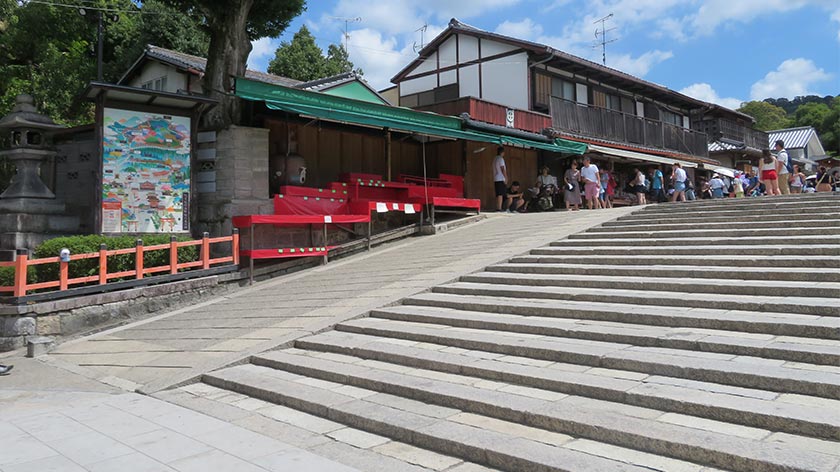
Once at the main shrine hall area, there are a few buildings to see including the shrine itself and a stage for traditional dances. The area has flagstone paths, but there are areas of gravel as well. Thankfully most of the gravel has a net under it so you will not sink in if you use a wheelchair.
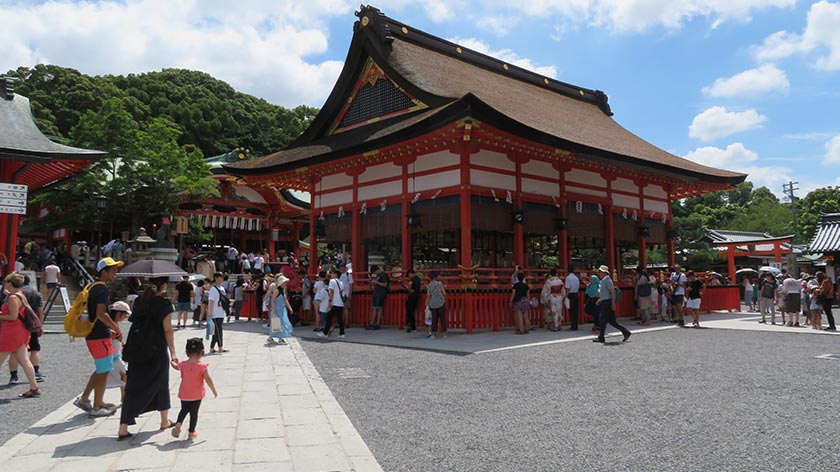
To go to the paths with the torii gates, there is an elevator behind the main shrine and a nicely paved path at the top that leads to the start of the main torii tunnel. (Note that the elevator can only be used between 9:00-15:00.)
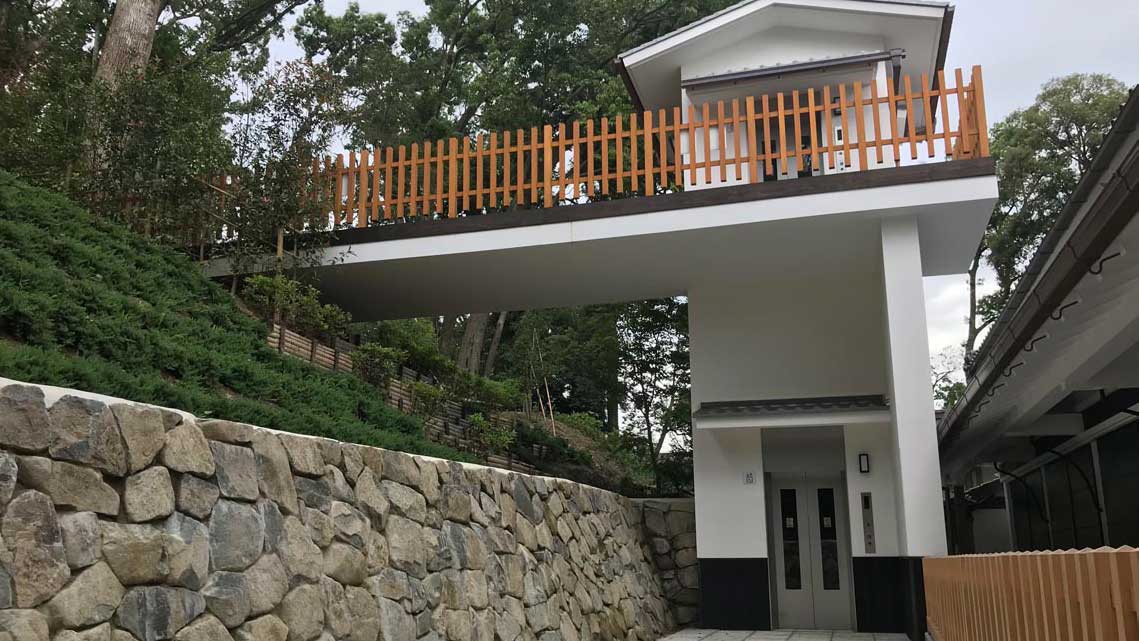
Once up the elevator, you can through the start of the torii tunnel and the double tunnel all the way to the inner okusha shrine.
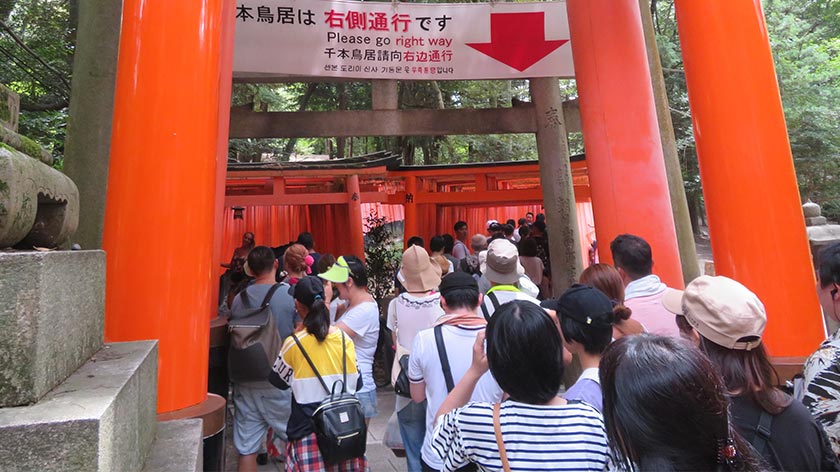
Unfortunately, the paths begin to climb the mountain and are made of stairs. Those who cannot climb stairs will need to return. The paths are directional, so after passing through the path heading upwards to get to the inner shrine, you can return down the other path which is less crowded and makes for better pictures.
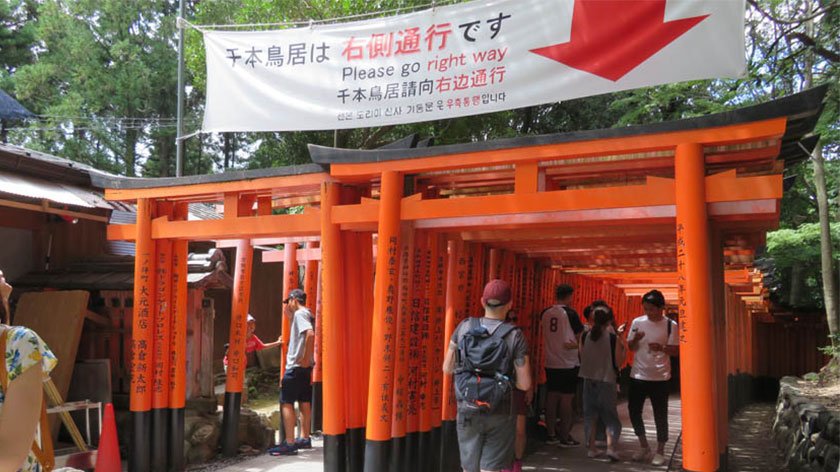
There are a few paths that can be partly explored near the inner shrine, but most are rough and quickly become impassible in a wheelchair.
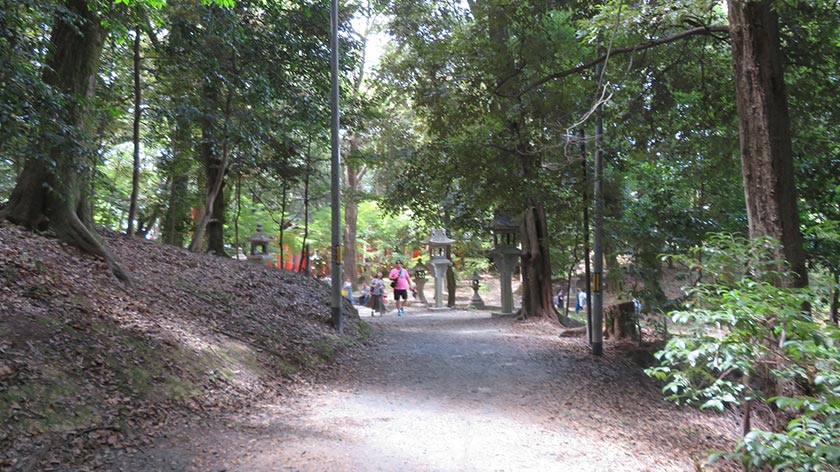
There is also a small ramp to the middle level between the main shrine and main tunnel so that you can easily access the horse shrine.
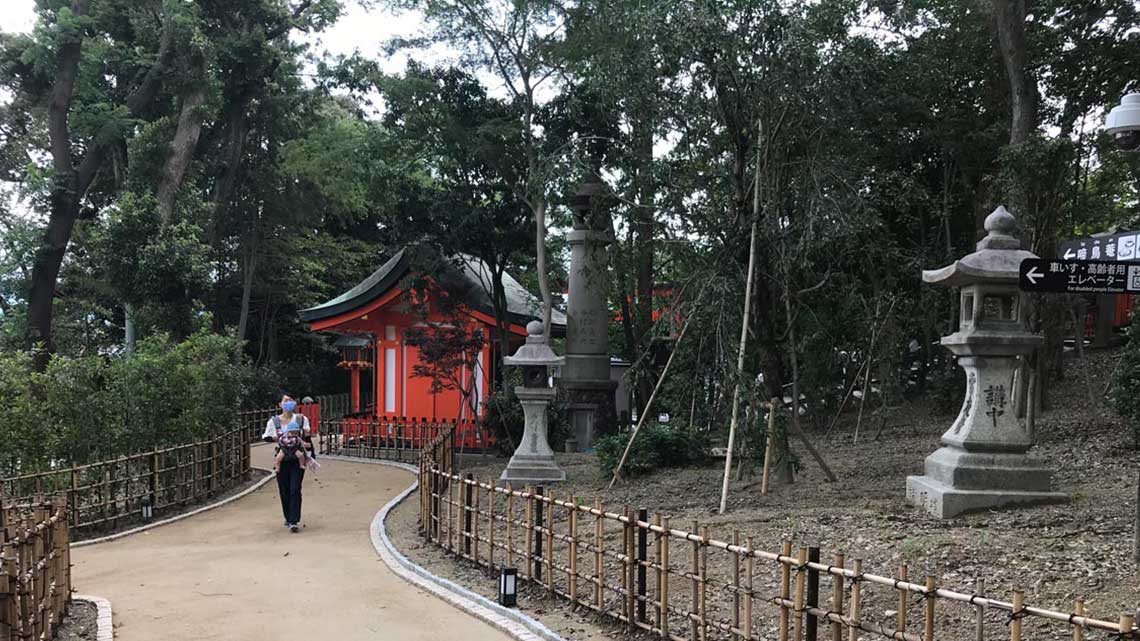
An accessible toilet is available at the train station and the lower part of the shrine.
Conclusion
While a large part of the mountain is out of reach to visitors with mobility needs, it is still possible to take pictures in the famous torii gates with a bit of effort and the help of one or two people. Since the shrine grounds are open 24hrs, it may be best to avoid the crowds and visit before 9am or after 4pm.
Credits
Special thanks: Accessible Japan would like to offer a heartfelt thanks to:
- Terin Jackson for the excellent background information on Fushimi Inari Shrine and accessibility updates.
Volunteer contribution help many interested visitors. Thank you!



